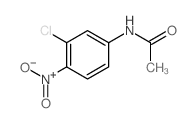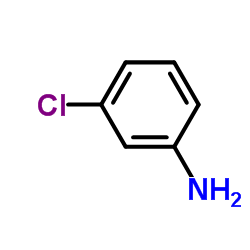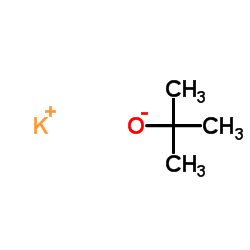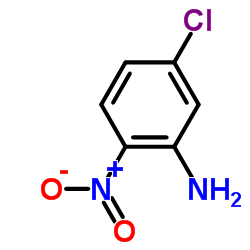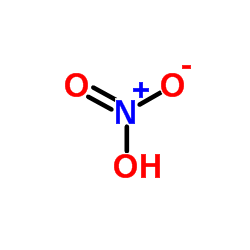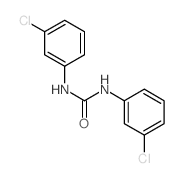825-41-2
| Name | 3-Chloro-4-Nitroaniline |
|---|---|
| Synonyms |
Benzenamine, 3-chloro-4-nitro-
MFCD00085922 3-Chloro-4-nitrobenzenamine Aniline, 3-chloro-4-nitro- 3-Chloro-4-nitroaniline |
| Density | 1.5±0.1 g/cm3 |
|---|---|
| Boiling Point | 366.8±22.0 °C at 760 mmHg |
| Melting Point | 158ºC |
| Molecular Formula | C6H5ClN2O2 |
| Molecular Weight | 172.569 |
| Flash Point | 175.7±22.3 °C |
| Exact Mass | 172.003952 |
| PSA | 71.84000 |
| LogP | 2.06 |
| Vapour Pressure | 0.0±0.8 mmHg at 25°C |
| Index of Refraction | 1.646 |
| Storage condition | 2-8°C |
Synonym: Section 2 - COMPOSITION, INFORMATION ON INGREDIENTS
Risk Phrases: 26/27/28 33 51/53 Section 3 - HAZARDS IDENTIFICATION EMERGENCY OVERVIEW
Very toxic by inhalation, in contact with skin and if swallowed. Danger of cumulative effects. Toxic to aquatic organisms, may cause long-term adverse effects in the aquatic environment. Potential Health Effects Eye: Causes mild eye irritation. Skin: May be fatal if absorbed through the skin. Absorption into the body may cause cyanosis (bluish discoloration of skin due to deficient oxygenation of the blood). Ingestion: May be fatal if swallowed. The toxicological properties of this substance have not been fully investigated. Inhalation: May be fatal if inhaled. Chronic: Not available. Section 4 - FIRST AID MEASURES Eyes: Immediately flush eyes with plenty of water for at least 15 minutes, occasionally lifting the upper and lower eyelids. Get medical aid immediately. Skin: Get medical aid immediately. Immediately flush skin with plenty of water for at least 15 minutes while removing contaminated clothing and shoes. Ingestion: Get medical aid immediately. Wash mouth out with water. Inhalation: Get medical aid immediately. Remove from exposure and move to fresh air immediately. If not breathing, give artificial respiration. If breathing is difficult, give oxygen. Notes to Physician: Section 5 - FIRE FIGHTING MEASURES General Information: As in any fire, wear a self-contained breathing apparatus in pressure-demand, MSHA/NIOSH (approved or equivalent), and full protective gear. Dusts at sufficient concentrations can form explosive mixtures with air. Extinguishing Media: Use water spray, dry chemical, carbon dioxide, or chemical foam. Section 6 - ACCIDENTAL RELEASE MEASURES General Information: Use proper personal protective equipment as indicated in Section 8. Spills/Leaks: Vacuum or sweep up material and place into a suitable disposal container. Avoid generating dusty conditions. Section 7 - HANDLING and STORAGE Handling: Minimize dust generation and accumulation. Do not breathe dust, vapor, mist, or gas. Do not get in eyes, on skin, or on clothing. Use only in a chemical fume hood. Storage: Store in a cool, dry place. Store in a tightly closed container. Section 8 - EXPOSURE CONTROLS, PERSONAL PROTECTION Engineering Controls: Use adequate ventilation to keep airborne concentrations low. Exposure Limits CAS# 825-41-2: Personal Protective Equipment Eyes: Not available. Skin: Wear appropriate protective gloves to prevent skin exposure. Clothing: Wear appropriate protective clothing to prevent skin exposure. Respirators: Follow the OSHA respirator regulations found in 29 CFR 1910.134 or European Standard EN 149. Use a NIOSH/MSHA or European Standard EN 149 approved respirator if exposure limits are exceeded or if irritation or other symptoms are experienced. Section 9 - PHYSICAL AND CHEMICAL PROPERTIES Physical State: Solid Color: Not available. Odor: Not available. pH: Not available. Vapor Pressure: Not available. Viscosity: Not available. Boiling Point: Not available. Freezing/Melting Point: Not available. Autoignition Temperature: Not available. Flash Point: Not available. Explosion Limits, lower: Not available. Explosion Limits, upper: Not available. Decomposition Temperature: Solubility in water: Specific Gravity/Density: Molecular Formula: Molecular Weight: 172.57 Section 10 - STABILITY AND REACTIVITY Chemical Stability: Not available. Conditions to Avoid: Incompatible materials. Incompatibilities with Other Materials: Strong oxidizing agents, strong acids, strong bases. Hazardous Decomposition Products: Hydrogen chloride, nitrogen oxides, carbon monoxide, carbon dioxide. Hazardous Polymerization: Has not been reported Section 11 - TOXICOLOGICAL INFORMATION RTECS#: CAS# 825-41-2 unlisted. LD50/LC50: Not available. Carcinogenicity: 3-Chloro-4-nitroaniline - Not listed by ACGIH, IARC, or NTP. Section 12 - ECOLOGICAL INFORMATION Section 13 - DISPOSAL CONSIDERATIONS Dispose of in a manner consistent with federal, state, and local regulations. Section 14 - TRANSPORT INFORMATION IATA Shipping Name: CHLORONITROANILINES Hazard Class: 6.1 UN Number: 2237 Packing Group: III IMO Shipping Name: CHLORONITROANILINES Hazard Class: 6.1 UN Number: 2237 Packing Group: III RID/ADR Shipping Name: CHLORONITROANILINES Hazard Class: 6.1 UN Number: 2237 Packing group: III Section 15 - REGULATORY INFORMATION European/International Regulations European Labeling in Accordance with EC Directives Hazard Symbols: T+ N Risk Phrases: R 26/27/28 Very toxic by inhalation, in contact with skin and if swallowed. R 33 Danger of cumulative effects. R 51/53 Toxic to aquatic organisms, may cause long-term adverse effects in the aquatic environment. Safety Phrases: S 28 After contact with skin, wash immediately with... S 36/37 Wear suitable protective clothing and gloves. S 45 In case of accident or if you feel unwell, seek medical advice immediately (show the label where possible). S 61 Avoid release to the environment. Refer to special instructions/safety data sheets. WGK (Water Danger/Protection) CAS# 825-41-2: No information available. Canada None of the chemicals in this product are listed on the DSL/NDSL list. CAS# 825-41-2 is not listed on Canada's Ingredient Disclosure List. US FEDERAL TSCA CAS# 825-41-2 is not listed on the TSCA inventory. It is for research and development use only. SECTION 16 - ADDITIONAL INFORMATION N/A |
| Hazard Codes | Xi: Irritant; |
|---|---|
| RIDADR | 2811.0 |
| HS Code | 2921420090 |
|
~% 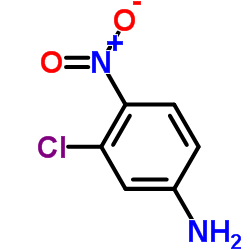
825-41-2 |
| Literature: Journal of the American Chemical Society, , vol. 68, p. 1322 |
|
~74% 
825-41-2 |
| Literature: Makosza, Mieczyslaw; Bialecki, Maciej Journal of Organic Chemistry, 1998 , vol. 63, # 15 p. 4878 - 4888 |
|
~73% 
825-41-2 |
| Literature: Ramana; Malik; Parihar Tetrahedron Letters, 2004 , vol. 45, # 47 p. 8681 - 8683 |
|
~% 
825-41-2 |
| Literature: Journal of the Chemical Society, , p. 693 Journal of the Chemical Society, , p. 2918; Journal of the Chemical Society, , p. 1419 |
|
~70% 
825-41-2 |
| Literature: Bayer Aktiengesellschaft Patent: US5262539 A1, 1993 ; |
|
~% 
825-41-2 |
| Literature: Recueil des Travaux Chimiques des Pays-Bas, , vol. 36, p. 158 |
|
~% 
825-41-2 |
| Literature: Justus Liebigs Annalen der Chemie, , vol. 182, p. 108 Zhurnal Russkago Fiziko-Khimicheskago Obshchestva, , vol. 9, p. 110 |
|
~% 
825-41-2
Detail
|
| Literature: Recueil des Travaux Chimiques des Pays-Bas, , vol. 36, p. 158 |
|
~% 
825-41-2
Detail
|
| Literature: Journal of the Society of Chemical Industry, London, , vol. 54, p. 282 T |
| HS Code | 2921420090 |
|---|---|
| Summary | HS:2921420090 aniline derivatives and their salts VAT:17.0% Tax rebate rate:9.0% Supervision conditions:none MFN tariff:6.5% General tariff:30.0% |

